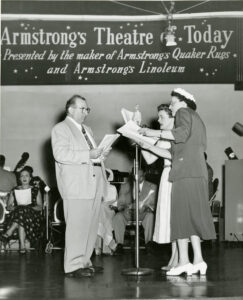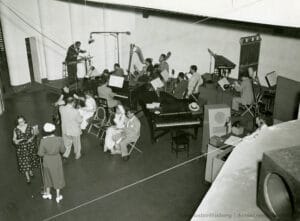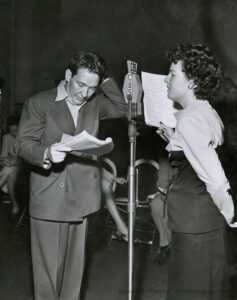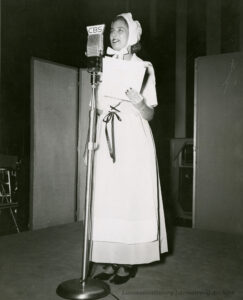This Program Brought To You By | Part 1
This Program Brought To You By:
Armstrong Cork Company and the Golden Age of Radio
Written by James McMahon, Ph.D.
Posted by Emily Miller
My name is James McMahon, and for the past several months I have been working as a project archivist for LancasterHistory. My responsibilities include cataloguing and digitizing a vast collection of archival materials that document the significant role of the cork industry in the local economy. This three part series will explore the role radio and television played in advertising and promoting the Armstrong Cork Company (now Armstrong World Industries, Inc.). Part I will focus solely on Armstrong’s use of radio while Parts II and II will take a look at Armstrong’s use of television shows, network specials, and commercials to reach consumers.
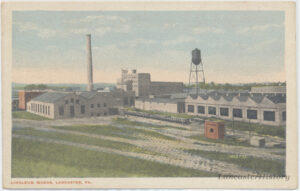
In 1860, Thomas Morton Armstrong founded what would become the Armstrong Cork Company. Originally located in Pittsburgh and focused on the manufacture of cork stoppers, the company quickly expanded its product line to include cork insulation and cork floor tiles. As the Armstrong Cork Company continued to grow, the company needed to find a way to utilize the cork dust—or cork flour as it came to be known—produced as a by-product of the cork manufacturing process. To solve the problem, the company decided to add the manufacture of linoleum flooring to its product line and to construct a new plant in Lancaster to accommodate production. The new plant opened in 1908 and was an immediate success; so successful, in fact, that the company decided to move the company general offices moved from Pittsburgh to Lancaster in 1929. Armstrong continued to produce residential linoleum flooring until 1974. With the growing popularity of vinyl and other resilient flooring products, linoleum became more of a commercial rather than residential flooring solution.
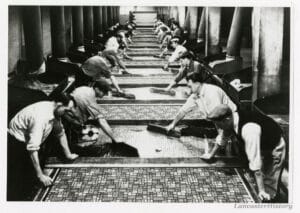
When the Armstrong Cork Company turned to the manufacture of linoleum in the new Lancaster plant, the company also decided to institute a national advertising campaign to help promote its new product. As part of this campaign, the first national consumer advertisement for Armstrong’s linoleum appeared in The Saturday Evening Post on September 1, 1917. In 1925, seeking to offer consumers a lower-cost product, Armstrong expanded its flooring line to include felt-backed rugs in addition to the burlap-backed linoleum already in production. To help sell the new product to consumers, Armstrong called its new felt-based product Quaker Rugs in an effort to associate the product with Pennsylvania and the perceived Quaker values of thrift, simplicity, and cleanliness. As part of the advertising campaign Armstrong chose the Quaker Girl as the personification of those values.
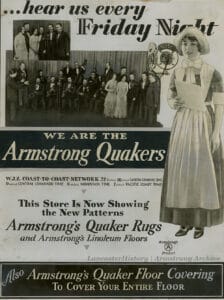
Perhaps influenced by the success of local Pittsburgh radio station KDKA in making the country’s first commercial broadcast in 1920, Armstrong instituted a radio advertising campaign of its own to help promote the sale of Quaker Rug Floor Coverings. On Friday, September 14, 1928, “Armstrong Quakers Evening at Home” a weekly half hour broadcast featuring the Armstrong Quakers vocal group backed by an orchestra, made its debut on the NBC radio network. Including both Lois Bennett as the Quaker Girl and Mary Hopple, a professional radio and opera singer as an integral part of what would eventually come an octet, the program was initially heard on 17 stations. The success of the program was immediate—in 1929, one single broadcast resulted in over 24,000 requests for Quaker Doll cutouts and by 1930, the program could be heard on 32 stations.
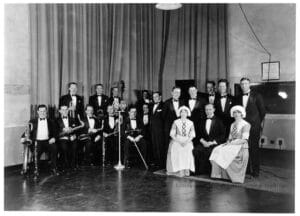
In 1931, the program format was expanded to include topical speakers; the first being Lowell Thomas who on April 10, 1931 described “The Proposed Submarine Expedition to the North Pole.” Later that year, Sir Hubert Wilkins attempted to reach the North Pole by submarine, but without success. Incidentally, the first submarine to reach the North Pole was the U.S. Navy nuclear submarine USS Nautilus in 1958. Despite the popularity of the new format, Armstrong canceled the program at the end of the year as the effects of the Great Depression continued to worsen.
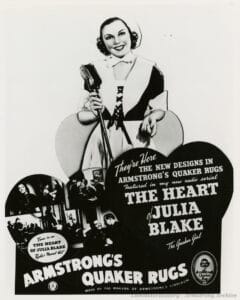
After a hiatus of several years, Armstrong Cork Company reentered the broadcast field on March 4, 1938 with the radio drama “The Heart of Julia Blake.” Broadcast three times a week, the daytime serial was designed to appeal to the homemaker. Featuring Rosaline Greene as the Quaker Girl and including commercials sung by the Armstrong Quakers, the program highlighted a different Quaker Rug pattern each week—using descriptive language to help the listener visualize the panoply of available colors and patterns. “Brought to you by the makers of Armstrong’s Quaker Rugs,” each 15-minute episode dramatized the adventures of Julia Blake, “a young woman struggling successfully against seemingly impossible odds.” “Despite the success of the program, Armstrong ended the run of Julia Blake in favor of a new half-hour format. The last broadcast of Julia Blake occurred on September 26, 1941.
October 4, 1941 marked the debut of “Armstrong’s Theatre of Today,” a half-hour radio program featuring a five-minute introductory news presentation followed by a dramatic performance based on some aspect of the news. The program was recorded at CBS Radio Theatre in New York City and broadcast every Saturday at 12 PM. The last broadcast of the program occurred on May 22, 1954.
“Armstrong’s Theatre of Today” opened each broadcast with the Quaker Girl announcing, “It’s high noon on Broadway!” followed by announcers George Bryan reading the news and Tom Shirley introducing the subsequent dramatic presentation. The Quaker Girl played by Elizabeth Reller or Julie Conway also read the commercials. The episodic dramatizations that followed the initial newscast featured the best known stars of film and theatre and included such noted performers as Burgess Meredith, Helen Hays, Ray Milland, Dorothy McGuire, and Vincent Price. Within three years the program was broadcast on 105 stations, the largest half-hour daytime hookup ever used in radio up to that time. More important from Armstrong’s point of view was the close association the public made between the show and its sponsor. When listeners heard the Armstrong Quaker Girl’s familiar opening words and the drama that followed, they thought—and bought— Armstrong Quaker Rugs.
As America entered the 1950s, television began to be seen as an advertising medium with even greater potential than radio. Part II of this series will explore how Armstrong took advantage of the growing popularity of television with the launch of “Armstrong Circle Theatre” on Tuesday, June 6, 1950—a kind of visual version of Armstrong’s “Theatre of Today” program—a preeminent entry in the era of original television drama developed and sponsored by some of America’s largest and best-known corporations.
Stay tuned for Part 2 of “This Program Brought To You By.” Thank you!
From Archives Blog
